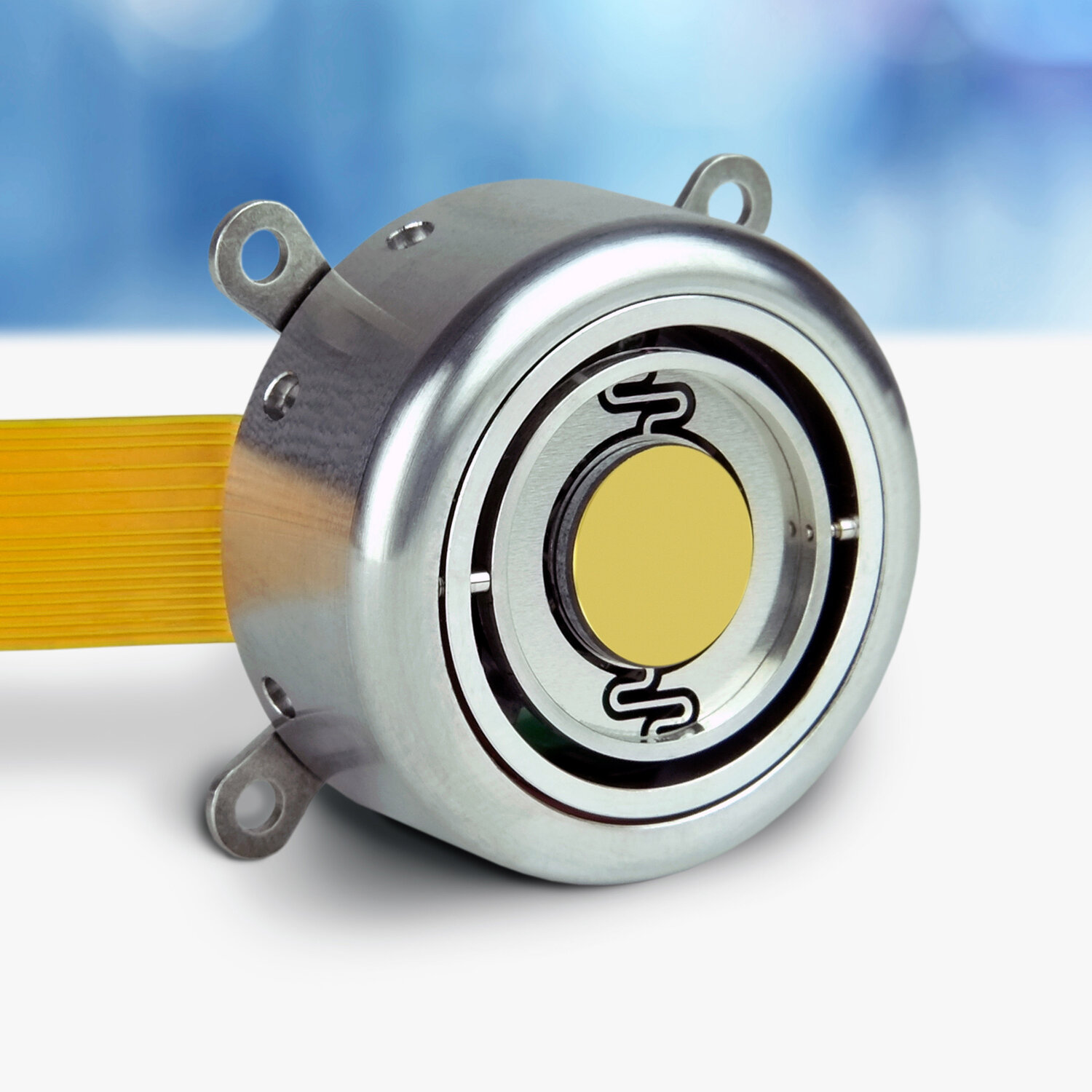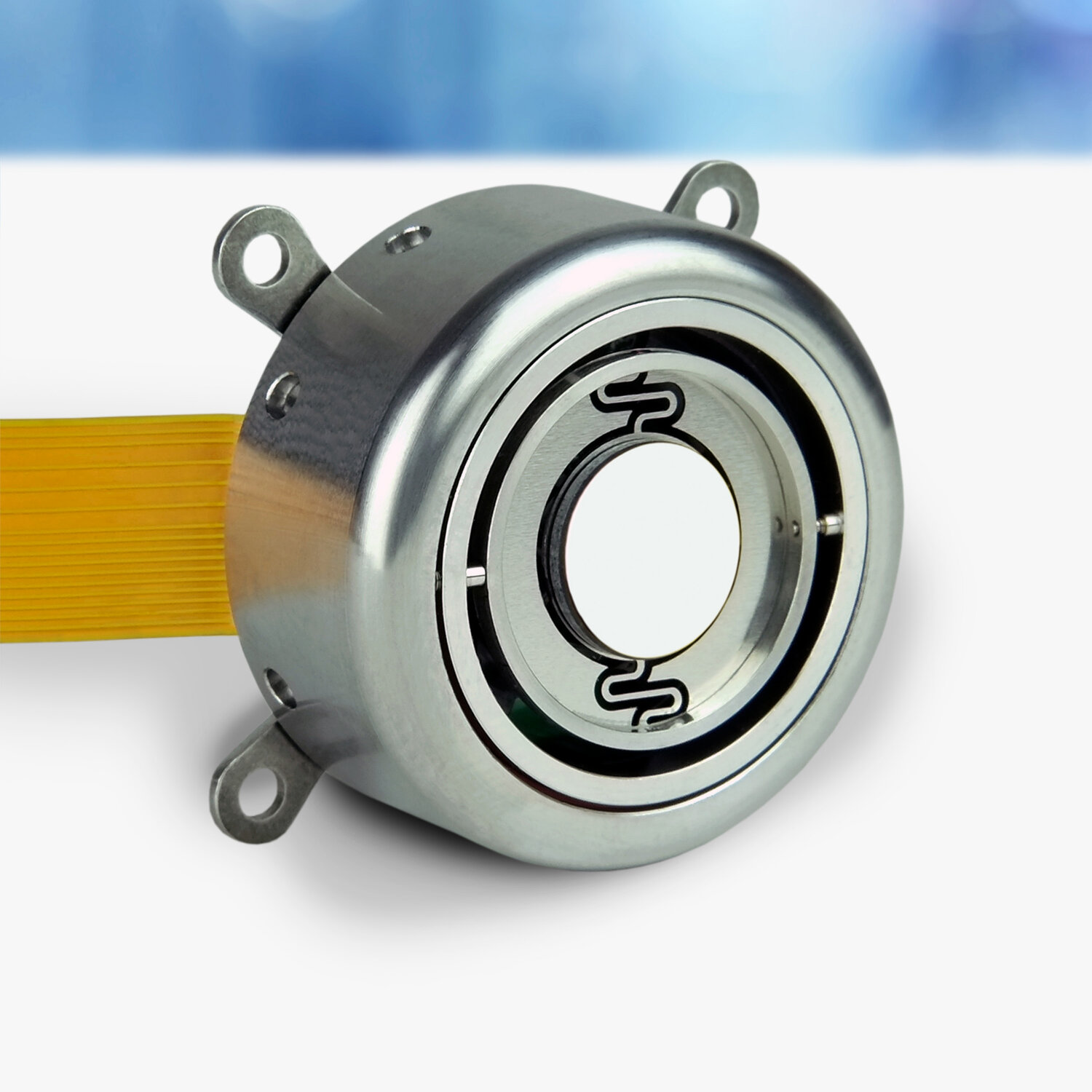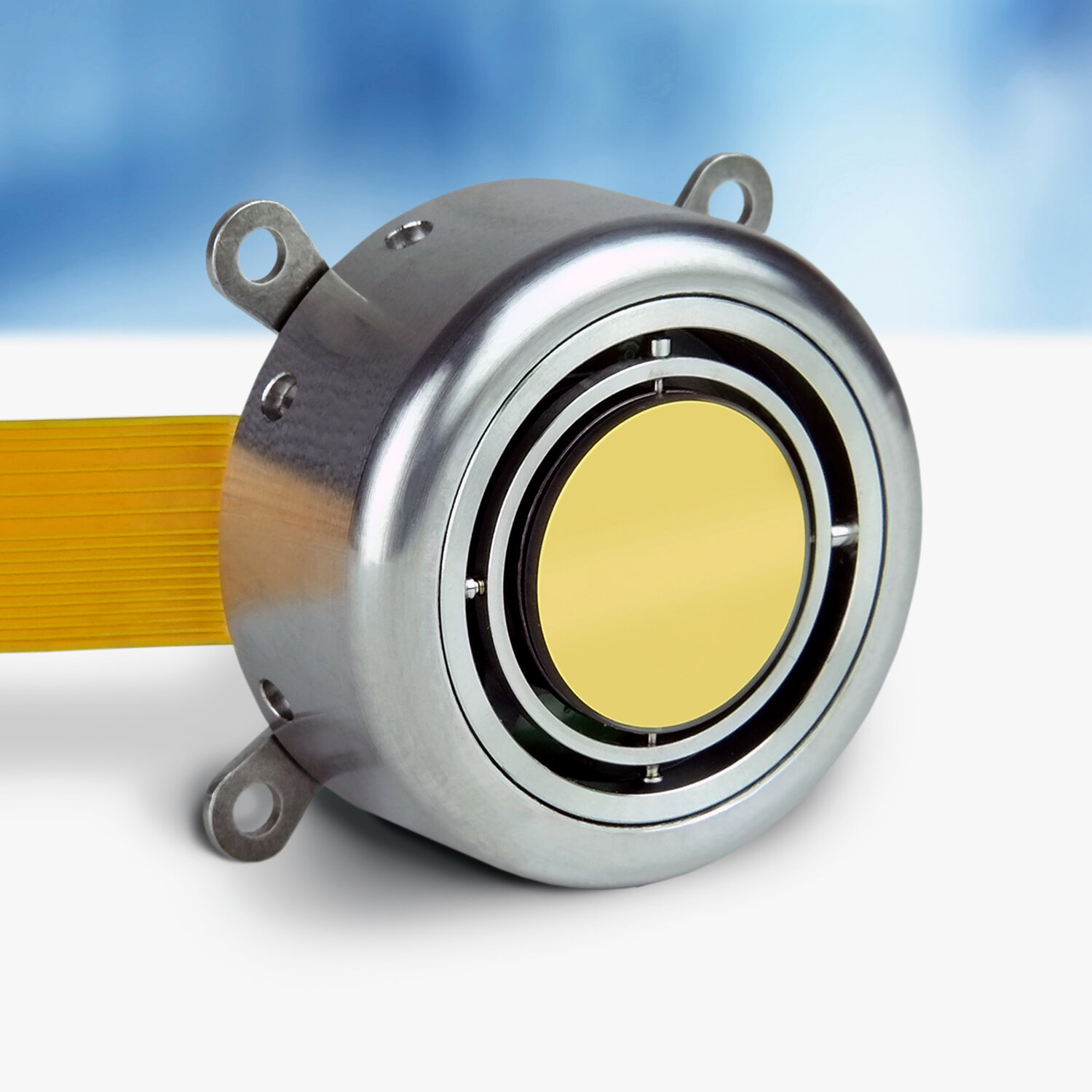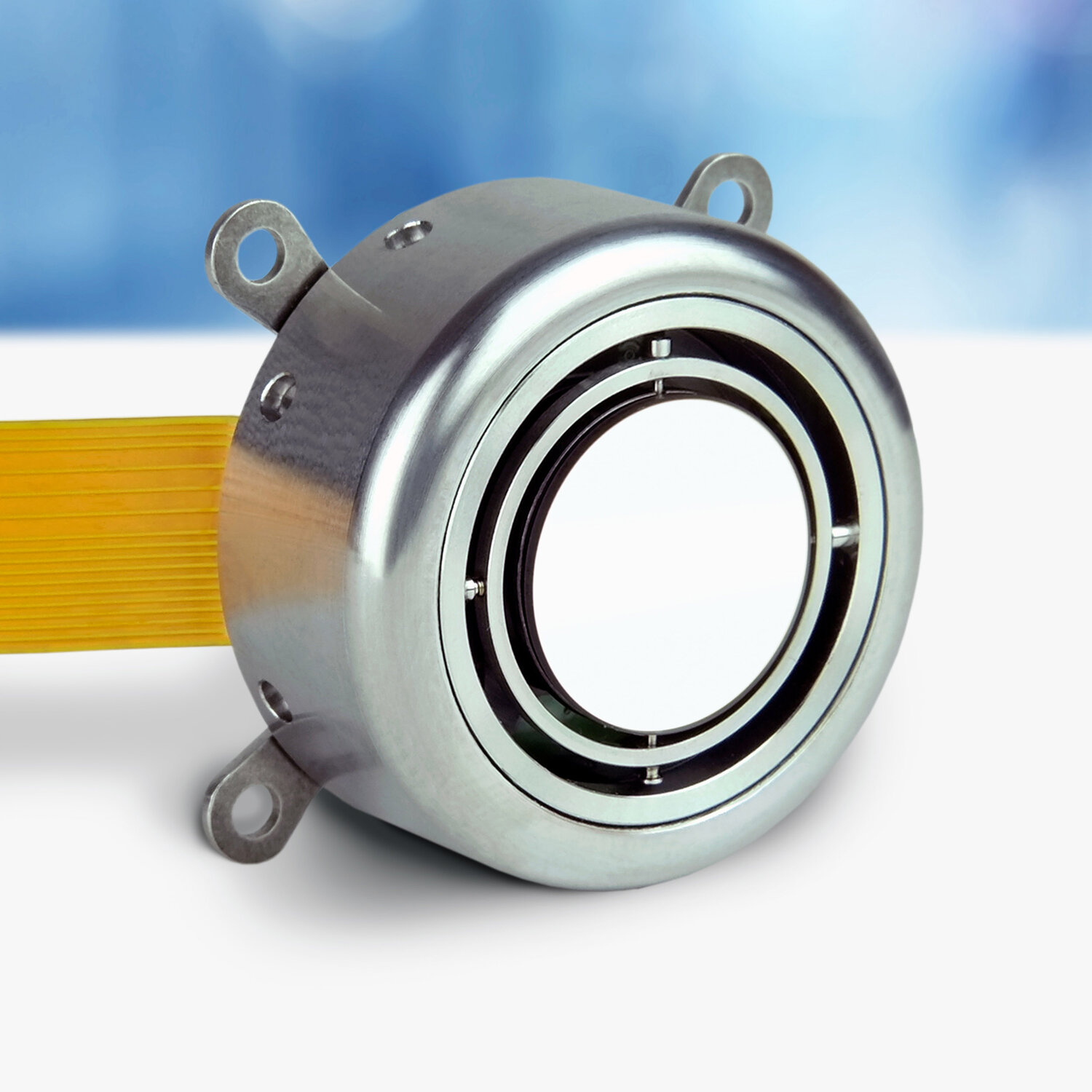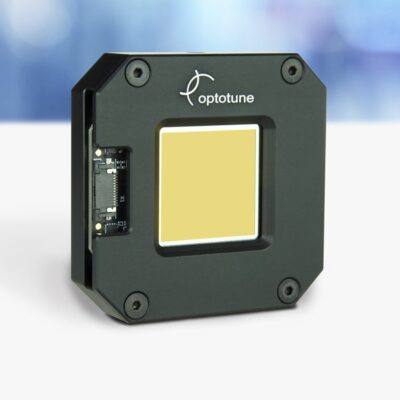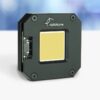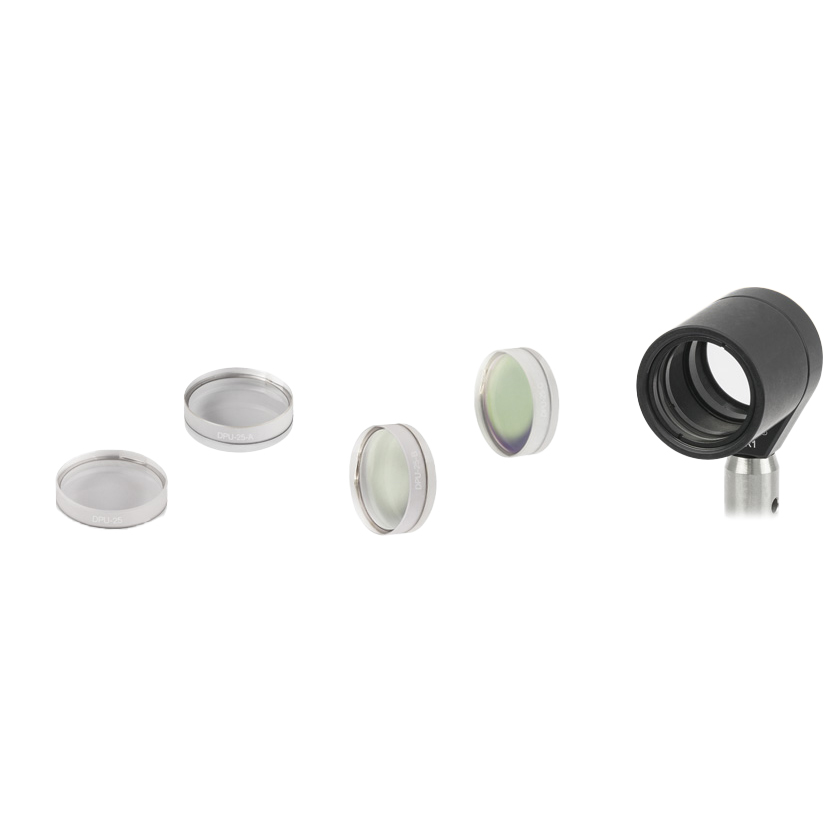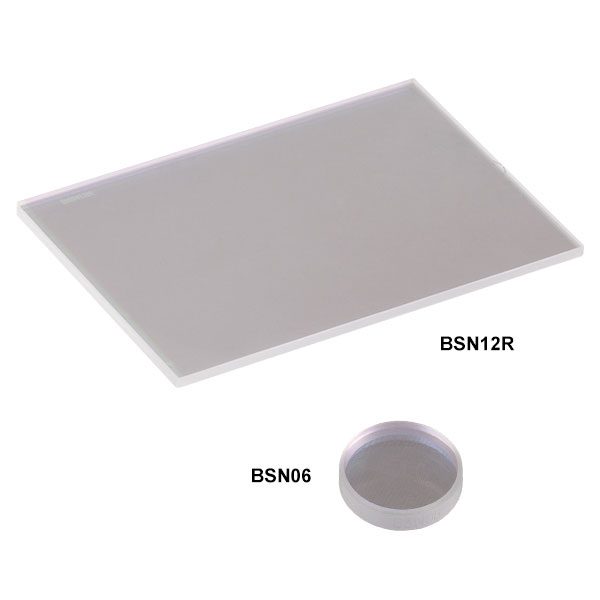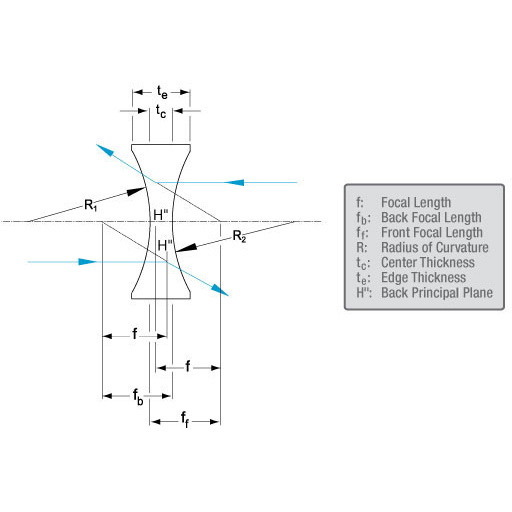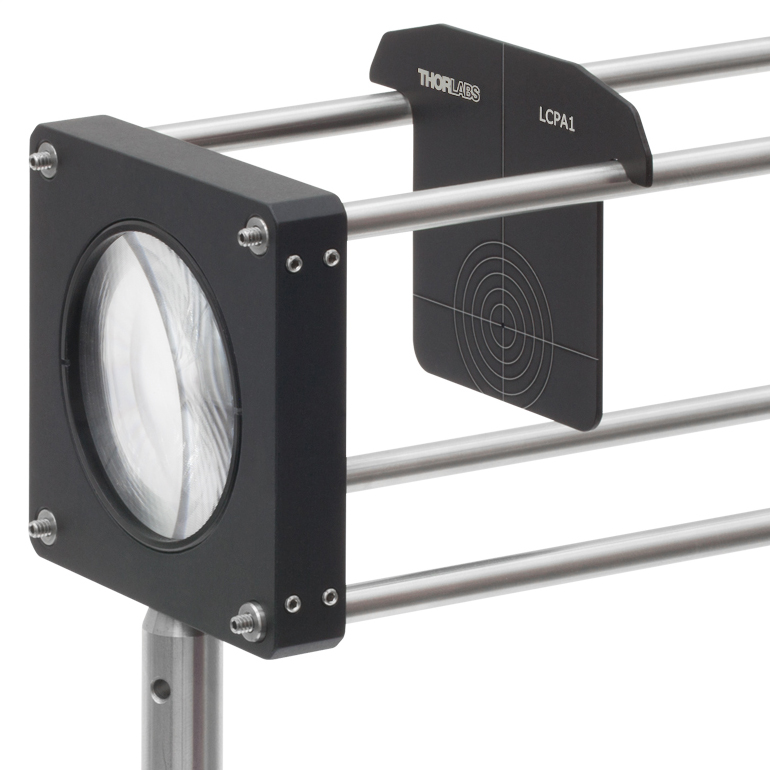Spec
MR-10-30
One-axis-resonant dual-axis fast steering mirror
Optotune’s one-axis-resonant dual axis fast steering mirror series MR-10-30 is the ideal choice for applications that require fast scanning and large deflection angles in a compact form factor. With a mirror size of 10 mm the MR-10-30 achieves up to ± 25° mechanical tilt in the linear axis and up to ±12.5° mechanical tilt in the resonant axis, resulting in a 100° x 50° field of view.
The mirror includes a position feedback system which allows accurate position read-out and control. The actuator is based on proven voice-coil technology and the resonant axis is solid-state. In contrast to galvo mirror systems, the virtual rotation point is very close to the mirror surface. The mirror can be fabricated with various coatings such as gold or protected silver.
The MR-10-30 is ideally suited for fast raster scanning. If you are interested in vector scanning and point & shoot applications, we recommend the MR-15-30 series.
Optotune offers the MR-E-2, a full development kit including the mirror, control electronics and software.
| Model | Description |
|---|---|
| MR-10-30 | .Control: Closed loop on quasi-static and amplitude control on resonant axis .Mechanical tilt angle: ±25° (slow axis), ±12.5° (fast axis) .Mirror size: Ø10 mm .Resolution (closed loop): 22 μrad (with MR-E-2) .Repeatability RMS (typical): — .Full-scale bandwidth: 20 Hz (slow axis), 250 Hz (fast axis) .Settling time: 3 ms (0.1° mech. step), 13 ms (20° mech. step) .Mirror coating: Protected gold, Protected silver .Mirror reflectivity: Protected gold coating: Avg >95% (800 nm – 2000 nm) .Mirror flatness P-V @549nm: λ/2 .Connectivity: 2 coils, 4 analog sensor channels, I2C (temperature sensor, EEPROM) .Compatible controller: MR-E-2 |
MR-15-30
Dual axis fast steering mirror with position feedback
Optotune’s dual axis fast steering mirror (FSM) series MR-15-30 is the ideal choice for applications that require large deflections in a compact form factor. With a mirror size of 15mm the MR-15-30 achieves up to +/- 25° mechanical tilt, which results in up to +/- 50° optical deflection. The mirror includes a position feedback system which allows it to be accurately controlled with a standard PID controller.
The actuator is based on proven voice-coil technology. In contrast to galvo mirror systems, the virtual rotation point is very close to the mirror surface. The mirror can be fabricated with various coatings such as gold, protected silver and other coatings including dielectrics on request.
The MR-15-30 is ideally suited for vector scanning and point & shoot applications. If you wish to do raster-scanning at higher speeds, we recommend the MR-10-30 series.
Optotune offers the MR-E-2, a full development kit including the mirror, control electronics and software.
| Model | Description |
|---|---|
| MR-15-30 | .Scan direction: 2D .Control: Closed loop on both axes .Mechanical tilt angle: ±25° both axes .Mirror size: Ø15 mm .Resolution (closed loop): 22 μrad (with MR-E-2) .Repeatability RMS (typical): 40 μrad .Full-scale bandwidth: 20 Hz both axes .Settling time: 3 ms (0.1° mech. step), 13 ms (20° mech. step) .Mirror coating: Protected gold, Protected silver, Dielectric VIS, Other coatings upon request .Mirror reflectivity: Protected gold coating: Avg >95% (800 nm – 2000 nm) .Mirror flatness P-V @549nm: λ/2 .Connectivity: 2 coils, 4 analog sensor channels, I2C (temperature sensor, EEPROM) .Compatible controller: MR-E-2 |
FMR-20
Fine steering mirror FMR-20
Optotune’s FMR devices have been designed with fine-tilt, high-angular resolution applications in mind. With a large clear aperture of 20 x 20 mm2 they can scan various beam patterns at 250 Hz bandwidth, with ±2.3 mrad tilt range. With the Optotune ICC-4C-2000 (sold separately) they are a plug and play fine steering solution.
Main features:
- One large optical surface for 2 DOF motion
- Linear (current vs angle)
- Bearingless design – no particles generated, no wear, no friction
- Suitable for high power laser applications1
| FMR-20 | .Mirror size: 20 x 20 mm .Device dimensions (width x height x depth): 50.8 x 50.8 x 12 mm .Mechanical tilt angle2 : X-axis, Y-axis: ±3.5 mrad, RMS (or ±0.2°, RMS) .Motion pattern: 2D programmable .Typ. transition (rise) time3 : 1.3 ms .Settling time3 : 4 ms .Resolution (with ICC-4C-2000): 4 µrad .Bandwidth: 250 (at ±2.3 mrad) Hz .Position control: Open loop .External sensor for feedback control: Can be added .Static motor constant: 17.5 mrad/A (or 1.0 °/A) .Dynamic motor constant: 1.2 · 104 rad/(As2) .Scale drift: 1000 ppm/K .Surface finish: Protected gold, dielectric NIR, custom |
2 Higher mechanical tilt angles of up to ±0.4° can be reached, limited by mechanical tolerances. Please note that there is a risk of damaging the device at deflections larger than ±0.2°, as well as increased noise and reduced overall performance. If you would like to operate the FMR-20 at such deflections, please contact us.
3 The transition time is considered to be the time it takes from one setpoint to the next, within a 12.5% margin. The shortest transition times are reached with an optimized current input, available on the ICC-4C-2000. The settling time can be as small as three times the transition time. The transition time depends only moderately on the step size, here given for 3.5 mrad (half range).
